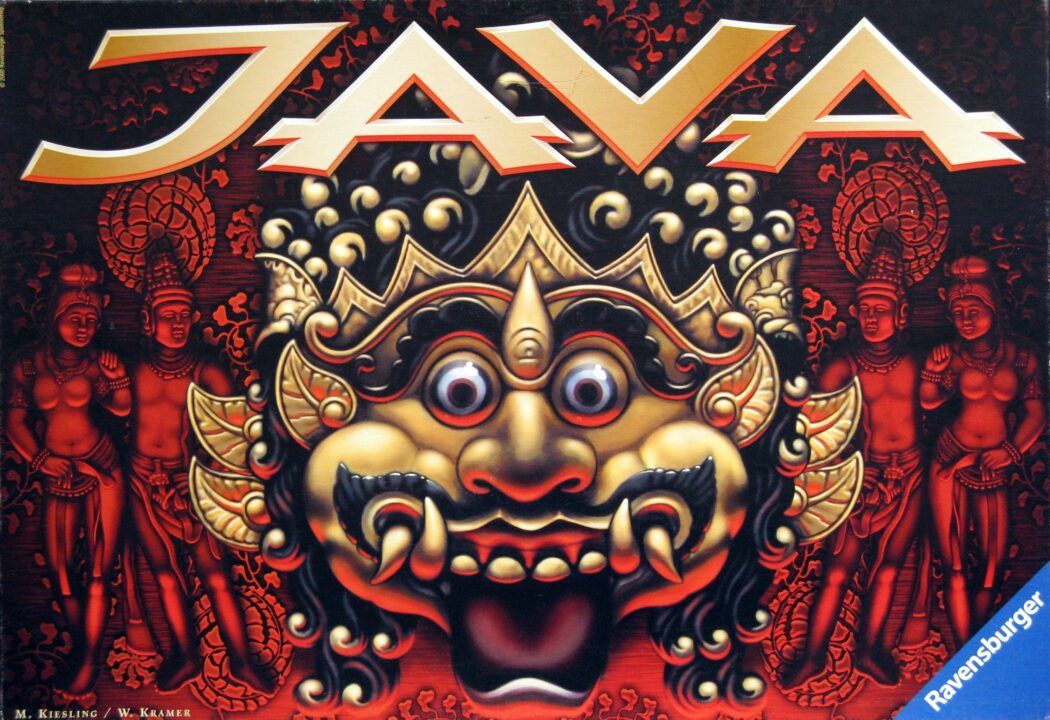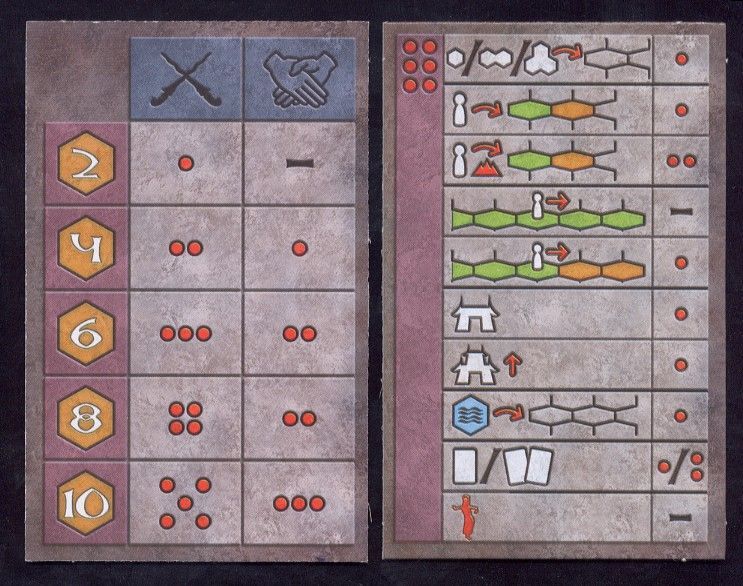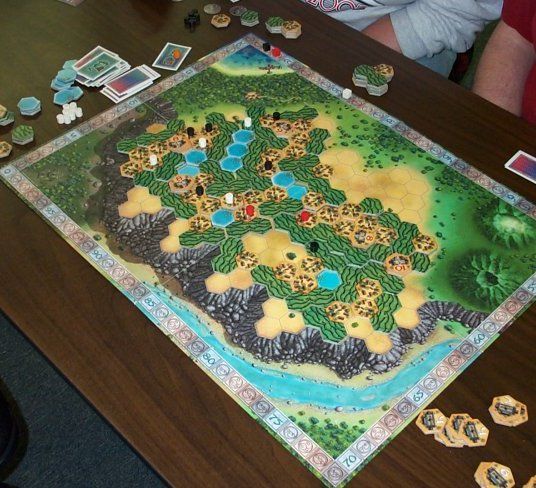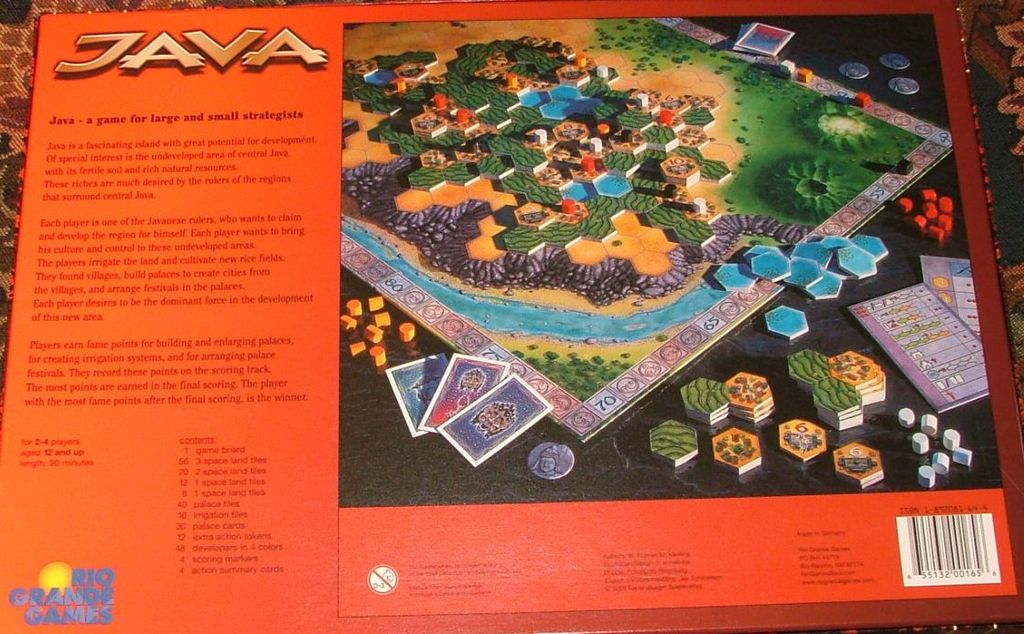Hey folks! Welcome to my review of Java, a fascinating board game that’s been taking up my weekends lately. If you’re a fan of strategy, tile-laying, and friendly competition, then buckle up, because Java has been an absolute blast to play! I’ve gathered my friends, poured some coffee (how fitting!), and dove into the intricate world of Java to bring you a detailed look at its components, strategy, player interaction, and replayability. So, let’s see if this game is worth adding to your collection or if it’s better left on the shelf!
How It Plays
Setting up
First, lay out the game board and shuffle the terrain tiles. Each player picks a color and gets a set of palaces and action markers. Place the initial tiles on the board as per the instructions.
Gameplay
Players take turns using their action points to place tiles, build villages and cities, and expand their influence. You can also raise the elevation, placing new tiles on top of old ones to form mountainous terrain. Each action has a cost in points, and you need to plan carefully to maximize your impact.
Winning the game
At the end of the game, players score points based on the size and height of their cities, palaces, and the control they have over areas. The player with the most points wins. Strategy and careful planning will determine your victory.
Want to know more? Read our extensive strategy guide for Java.
Java: A Masterpiece of Game Design and Components
Let’s talk about Java, one of the gems in the board game world. Every time I open that box, it feels like a ritual. First thing, the sheer weight of the components tells you this game means business! The tiles are thick, durable, and feel like they could outlive a cockroach. Honestly, if my house ever gets hit by a meteor, I’m hiding under those tiles.
The artwork is stunning. The designers really nailed the aesthetic. The lush greenery and ancient temples, all scream adventure. I swear, if Indiana Jones played board games, he’d pick Java. And those little wooden pieces – they’re like tiny, colorful soldiers ready for battle. I’ve had friends try to sneak them home because they look so cool. The designers knew what they were doing.
Everything is easy to distinguish. When you’re in the middle of an intense game, the last thing you need is to squint at the board wondering what’s what. Nope, Java keeps it smooth – easy to see, easy to play. Plus, those player boards? They keep everything organized so your table doesn’t end up looking like a disaster zone. How many games can boast that?
Even the rulebook is top-notch. Clear instructions, with nice illustrations. It’s like they thought of everything. No endless debates about rules here. Java’s design and components make it a joy to play, even for newbies.
Next, we’ll jump into the strategy and depth of Java – trust me, it’s a wild ride!
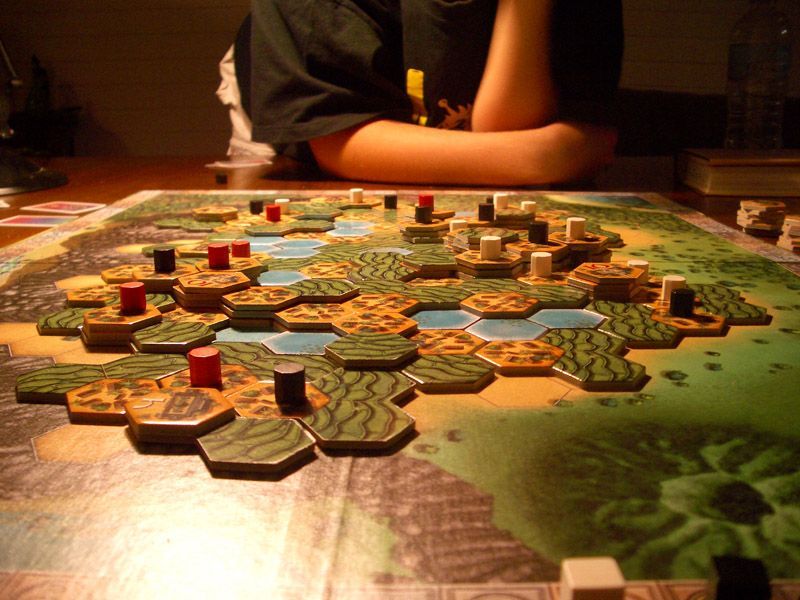
Unleashing Your Inner Tactician with Java
Java isn’t just pretty; it’s got brains, too. This game offers endless strategic depth. Picture yourself in ancient Java, weaving rivers, building cities, and expanding rice paddies. Each turn feels like a chess match, but with way more flair. I remember my friend Bob getting all smug with his watertiles, only to be outdone by my well-timed palace placement. Sweet, sweet victory!
One of the best things about Java is how it makes you think several moves ahead. You’ve got to consider not just your current turn but also how your actions will affect the board—and your opponents—down the line. It’s like cooking a complex meal where every ingredient must be added at just the right time. A single mistake can ruin your whole dish, or game, in this case.
The tile-laying mechanic is pure genius. Each tile you place can open up or close off opportunities. Will you expand a water route, build on higher ground, or increase the value of your palace? Decisions, decisions! The game’s scoring system adds another layer of strategy, as you must balance immediate gains with long-term benefits. Do you grab those quick points now or invest in a future bonanza?
Java shines in its replayability. The board will never look the same twice. It keeps you coming back to try different strategies, learning from past games and tweaking your approach. It’s like you’re a mad scientist in the lab, always seeking the perfect formula for victory.
But all this brainy stuff doesn’t get old because the game keeps you engaged at every turn. Ready to explore how Java brings us together in fierce competition? Stay tuned for Player Interaction!

Player Interaction in Java: A Game of Wits and Sabotage
Java is not just a game of placing tiles and scoring points. It’s a game where you and your friends might end up side-eyeing each other across the table a bit more intensely. Player interaction in Java is as rich as a chocolate fondue. You can’t just focus on your own strategy; you need to keep an eye on your buddies, too.
I remember a game night where my friend Steve, the eternal prankster, placed his tile in a way that completely blocked my grand plan. I had to rethink my entire strategy on the fly! You see, Java encourages you to disrupt your opponents’ plans while building up your own. It’s like you’re all architects, but there’s only so much land to go around, and someone’s bound to step on your toes.
The beauty of Java lies in its indirect confrontations. You won’t find any direct attacks here, but the game rewards cunning maneuvering and strategic placement of tiles. The interactions are subtle but impactful. You get to enjoy a mental tug-of-war with your friends without any outright hostility. It’s like a fencing match with wits instead of swords.
So, if you’re someone who loves outsmarting your pals within the confines of a friendly competition, Java offers plenty of opportunities for just that. The game’s mechanics ensure that you’re always engaged, always plotting, and always wary of what the next move might bring from your opponents.
Next up, let’s discuss how Java fares in terms of replayability and balance. Stay tuned, it’s going to be an interesting ride!
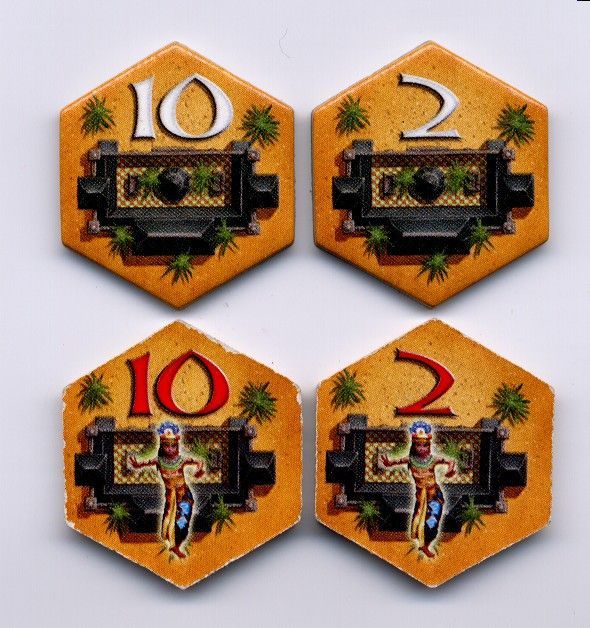
Replayability and Balance in Java
If you love a game that keeps bringing you back, Java fits the bill. Every playthrough feels fresh because of the different strategies you can try. The map of the Indonesian island changes every time, thanks to the modular board setup. You won’t get bored quickly.
Now, let’s talk balance. This game excels here. Every action counts, and you can’t just rely on luck to win. The tile-laying mechanic ensures a level playing field. Each player’s decisions directly affect their success and others at the table. You have to think ahead, plan, and sometimes outsmart your friends.
Java does a great job of making sure no one feels left out. Whether you’re a seasoned gamer or a newbie, you’ll find joy in its mechanics. However, the game can be a bit overwhelming at first. You’ll need a couple of rounds to get the hang of it. But once you do, it’s rewarding.
One thing to watch out for is analysis paralysis. Some players might take forever to make a move, which can slow things down. It’s not a deal-breaker, but something to keep in mind.
So, do I recommend Java? Absolutely! It’s a well-balanced game with high replayability. Perfect for a game night where you want a deep, engaging experience. Just make sure your friends can handle a bit of brain burn.

Conclusion
Java truly stands out in the world of board games. The design and components are top-notch, making every game a visual treat. The strategic depth keeps even the most tactical minds engaged, while the player interaction brings a level of friendly competition that’s hard to beat.
Replayability is a huge plus, thanks to the modular board and varied gameplay each session offers. However, if you or your friends tend to overthink, be prepared for some analysis paralysis. That said, the game remains balanced and fair, ensuring everyone has a fighting chance at victory.
If you’re looking for a game that combines strategy, stunning visuals, and endless replayability, Java is a solid choice. Just make sure your gaming group is up for the challenge. This concludes my review of Java. Happy gaming!

